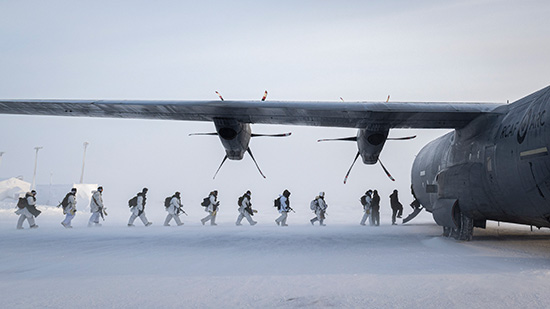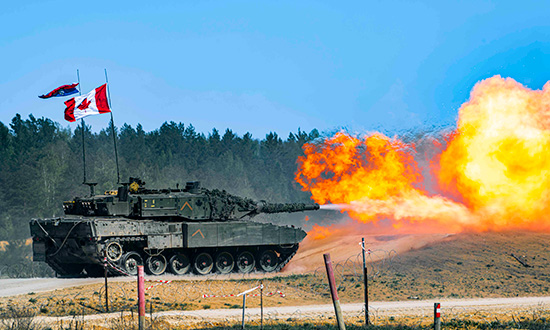Canadian Army launches bold modernization and restructuring initiative
October 9, 2025 - Defence Stories
Estimated read time – 2:30

Caption
Members of Arctic Response Company Group (ARCG) board a CC-130J Hercules transport aircraft for their departure to Eureka during Operation NANOOK-NUNALIVUT in Resolute Bay, on March 5, 2024.
Photo by: Master Corporal Alana Morin.
The Canadian Army has entered a pivotal moment in its history. Lieutenant-General M.C. Wright, Commander of the Canadian Army, recently unveiled a sweeping modernization and restructuring initiative designed to transform the Army into a force ready to meet the demands of today’s volatile global security environment. At the heart of this transformation is Inflection Point 2025, a strategic blueprint that acknowledges a stark reality: the Army we have is not the Army we need. The strategy outlines a generational shift in how the Army is structured, equipped, trained, and sustained.
Responding to a changing world
The modernization effort is driven by the increasing risk of high-intensity conflict, rapid evolution of warfare technologies, and the impact of climate change. Canada also faces unprecedented challenges to its sovereignty and security due to geopolitical competition in the Arctic. In this context, the Army must be prepared for major combat operations—large-scale, joint, and combined arms engagements against peer adversaries. This marks a significant shift from decades of focus on providing support to coalition operations.

Caption
A Canadian Leopard 2 tank with The Royal Canadian Dragoons take part in the Canadian Army Trophy tank gunnery competition during Operation REASSURANCE at Camp Adazi, in Latvia, on 02 May, 2024.
Photo Credit: Corporal Bryan Bodo, Canadian Armed Forces Imagery Technician.
Restructuring for operational effectiveness
To meet these demands, the Canadian Army is restructuring into four integrated formations, each aligned with operational needs and designed to enhance agility, scalability, and readiness:
- Defence of Canada Division: The dedicated homeland defence force and the backbone of national mobilization
- Manoeuvre Division: The frontline for land combat, providing fully equipped, deployable forces for major combat operations
- Support Division: The foundation of Canadian Army base and institutional support, with direct links to the national supply chain
- Training Formation: Responsible for delivering individual and collective soldier training, and preparing leaders through professional military education
This restructuring shifts operational leadership to the divisional level, allowing Canadian Army Headquarters to focus strategically on safeguarding national sovereignty and territorial integrity. The transition will begin in 2026, guided by an upcoming Canadian Army Modernization Order and Master Implementation Directive.
Investing in people and capabilities
With recent increases in size and strength, the Regular Force now stands at approximately 22,000 soldiers, the Reserve Force includes about 20,000, and the Canadian Rangers number nearly 5,000, with room to grow. Over the next two years, soldiers will be equipped with new modular assault rifles, night vision devices, drones, as well as operational clothing and personal equipment designed for comfort and performance.
Current modernization efforts include nearly 50 major capital projects, such as:
- Enhanced command and control, integrating computers, communications, cyber, intelligence, surveillance, reconnaissance, and targeting (C5ISRT)
- Long-Range Precision Strike (LRPS) capabilities
- Ground-Based Air Defence (GBAD) systems
- Domestic Arctic Mobility Enhancement (DAME) platforms
- Indirect Fires Modernization (IFM)
A culture of adaptation
LGen Wright emphasized the need for a clear and strong identity within the Army—one rooted in discipline, service, respect, fitness, and a fighting spirit. This transformation also includes fostering innovation and digital excellence, along with the One Army concept, integrating members of the Regular and Reserve forces, Canadian Rangers, and civilian members of the Defence Team.
The message is clear: modernization is not optional. It is essential to defend Canada’s interests at home and abroad. As the Commander concluded, “The change starts now.”
For more information, visit Canadian Army Modernization.